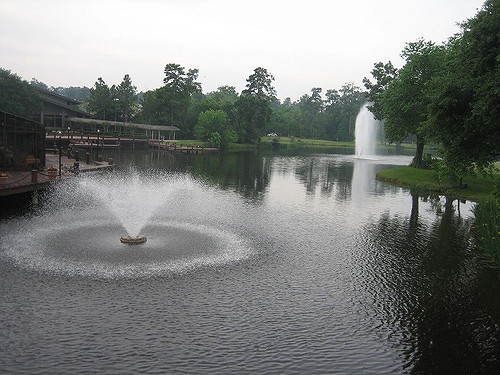U.S. Air Force troops in Texas are facing some serious hazards in the air: birds. They may seem benign, but they can cause real damage to aircraft. Remember the Miracle on the Hudson?
Birds near the runways of Randolph Air Force Base have become such a danger to pilots, they’ve formed a special unit to combat the problem. Maj. Jason Powell, flight instructor and part of the Randolph’s Bird Dispersal Team, says that the layout of the base makes it especially prone to flocks of birds.
“Our runways at Randolph are on the outside of the base, and the housing and the trees and the environment are in between the runways,” Powell says. “So we attract a lot of birds to that environment in the middle and they fly out over our runways.”
Birds as small as a four-swift can render a jet engine inoperable if they get sucked in, Powell says. But the main problem bird at the base is the white-winged dove, which is considerably larger and flies in big flocks. He estimates that as many as 15,000 to 20,000 birds live on the base at any given time. On average, the base has about 70 bird strikes a year, even more during rainy years.
“Every year we’ve lost at least one engine due to bird strikes,” Powell says. “In 2014, we had a bird go through the cockpit and actually strike the pilot. The other pilot who was in the airplane was able to land the aircraft.”
Last year, birds caused about $1.2 million in damage to airplanes. In order to reduce the problem and the resulting financial losses, Powell says they are taking a two-pronged approach. The first is habitat management.
“Our biggest effort’s about $800,000 a year in tree trimming to try and reduce the places where the birds can nest and roost here on base,” he says. “Our goal is to try to get the habitat in balance, to where we have animals that we don’t mind living here, but the animals we don’t want here will leave.”
The other approach is trying to understand the behavioral patterns of the white-winged dove.
“We’ve teamed with the U.S. Department of Agriculture and the U.S. Fish and Wildlife service to track the dove, find out where they’re going, where they’re eating, what they’re doing throughout the year,” Powell says. “Once we have a complete picture of how the birds behave, we can continue to modify the habitat to where the white-winged dove will just voluntarily leave.”
Post by Alexandra Hart.
















